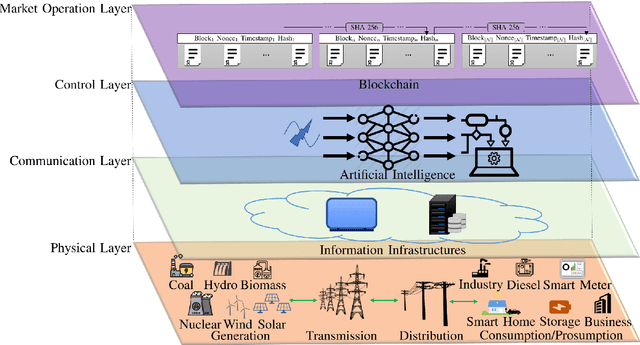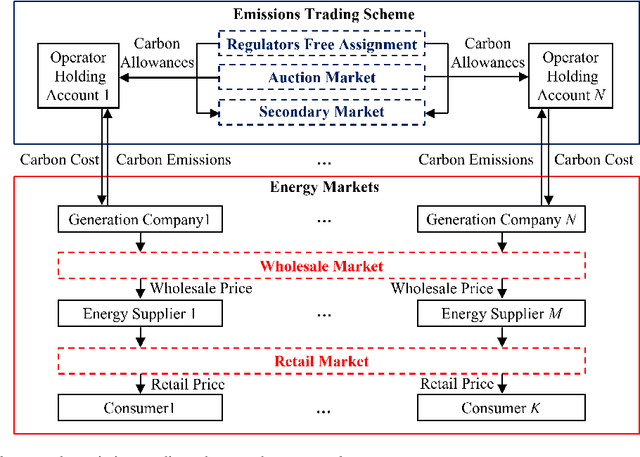Hongjian Sun
Coop-WD: Cooperative Perception with Weighting and Denoising for Robust V2V Communication
May 06, 2025Abstract:Cooperative perception, leveraging shared information from multiple vehicles via vehicle-to-vehicle (V2V) communication, plays a vital role in autonomous driving to alleviate the limitation of single-vehicle perception. Existing works have explored the effects of V2V communication impairments on perception precision, but they lack generalization to different levels of impairments. In this work, we propose a joint weighting and denoising framework, Coop-WD, to enhance cooperative perception subject to V2V channel impairments. In this framework, the self-supervised contrastive model and the conditional diffusion probabilistic model are adopted hierarchically for vehicle-level and pixel-level feature enhancement. An efficient variant model, Coop-WD-eco, is proposed to selectively deactivate denoising to reduce processing overhead. Rician fading, non-stationarity, and time-varying distortion are considered. Simulation results demonstrate that the proposed Coop-WD outperforms conventional benchmarks in all types of channels. Qualitative analysis with visual examples further proves the superiority of our proposed method. The proposed Coop-WD-eco achieves up to 50% reduction in computational cost under severe distortion while maintaining comparable accuracy as channel conditions improve.
Integrated Sensing, Communication, and Over-The-Air Control of UAV Swarm Dynamics
Feb 11, 2025Abstract:Coordinated controlling a large UAV swarm requires significant spectrum resources due to the need for bandwidth allocation per UAV, posing a challenge in resource-limited environments. Over-the-air (OTA) control has emerged as a spectrum-efficient approach, leveraging electromagnetic superposition to form control signals at a base station (BS). However, existing OTA controllers lack sufficient optimization variables to meet UAV swarm control objectives and fail to integrate control with other BS functions like sensing. This work proposes an integrated sensing and OTA control framework (ISAC-OTA) for UAV swarm. The BS performs OTA signal construction (uplink) and dispatch (downlink) while simultaneously sensing objects. Two uplink post-processing methods are developed: a control-centric approach generating closed-form control signals via a feedback-looped OTA control problem, and a sensing-centric method mitigating transmission-induced interference for accurate object sensing. For the downlink, a non-convex problem is formulated and solved to minimize control signal dispatch (transmission) error while maintaining a minimum sensing signal-to-noise ratio (SNR). Simulation results show that the proposed ISAC-OTA controller achieves control performance comparable to the benchmark optimal control algorithm while maintaining high sensing accuracy, despite OTA transmission interference. Moreover, it eliminates the need for per-UAV bandwidth allocation, showcasing a spectrum-efficient method for cooperative control in future wireless systems.
Retrieval Augmented Cross-Modal Tag Recommendation in Software Q&A Sites
Feb 06, 2024Abstract:Posts in software Q\&A sites often consist of three main parts: title, description and code, which are interconnected and jointly describe the question. Existing tag recommendation methods often treat different modalities as a whole or inadequately consider the interaction between different modalities. Additionally, they focus on extracting information directly from the post itself, neglecting the information from external knowledge sources. Therefore, we propose a Retrieval Augmented Cross-Modal (RACM) Tag Recommendation Model in Software Q\&A Sites. Specifically, we first use the input post as a query and enhance the representation of different modalities by retrieving information from external knowledge sources. For the retrieval-augmented representations, we employ a cross-modal context-aware attention to leverage the main modality description for targeted feature extraction across the submodalities title and code. In the fusion process, a gate mechanism is employed to achieve fine-grained feature selection, controlling the amount of information extracted from the submodalities. Finally, the fused information is used for tag recommendation. Experimental results on three real-world datasets demonstrate that our model outperforms the state-of-the-art counterparts.
Sequential Tag Recommendation
Oct 09, 2023Abstract:With the development of Internet technology and the expansion of social networks, online platforms have become an important way for people to obtain information. The introduction of tags facilitates information categorization and retrieval. Meanwhile, the development of tag recommendation systems not only enables users to input tags more efficiently, but also improves the quality of tags. However, current tag recommendation methods only consider the content of the current post and do not take into account the influence of user preferences. Since the main body of tag recommendation is the user, it is very necessary to obtain the user's tagging habits. Therefore, this paper proposes a tag recommendation algorithm (MLP4STR) based on the dynamic preference of user's behavioral sequence, which models the user's historical post information and historical tag information to obtain the user's dynamic interest changes. A pure MLP structure across feature dimensions is used in sequence modeling to model the interaction between tag content and post content to fully extract the user's interests. Finally tag recommendation is performed.
Interpretable Dimensionality Reduction by Feature Preserving Manifold Approximation and Projection
Nov 17, 2022Abstract:Nonlinear dimensionality reduction lacks interpretability due to the absence of source features in low-dimensional embedding space. We propose an interpretable method featMAP to preserve source features by tangent space embedding. The core of our proposal is to utilize local singular value decomposition (SVD) to approximate the tangent space which is embedded to low-dimensional space by maintaining the alignment. Based on the embedding tangent space, featMAP enables the interpretability by locally demonstrating the source features and feature importance. Furthermore, featMAP embeds the data points by anisotropic projection to preserve the local similarity and original density. We apply featMAP to interpreting digit classification, object detection and MNIST adversarial examples. FeatMAP uses source features to explicitly distinguish the digits and objects and to explain the misclassification of adversarial examples. We also compare featMAP with other state-of-the-art methods on local and global metrics.
Applications of blockchain and artificial intelligence technologies for enabling prosumers in smart grids: A review
Feb 21, 2022



Abstract:Governments' net zero emission target aims at increasing the share of renewable energy sources as well as influencing the behaviours of consumers to support the cost-effective balancing of energy supply and demand. These will be achieved by the advanced information and control infrastructures of smart grids which allow the interoperability among various stakeholders. Under this circumstance, increasing number of consumers produce, store, and consume energy, giving them a new role of prosumers. The integration of prosumers and accommodation of incurred bidirectional flows of energy and information rely on two key factors: flexible structures of energy markets and intelligent operations of power systems. The blockchain and artificial intelligence (AI) are innovative technologies to fulfil these two factors, by which the blockchain provides decentralised trading platforms for energy markets and the AI supports the optimal operational control of power systems. This paper attempts to address how to incorporate the blockchain and AI in the smart grids for facilitating prosumers to participate in energy markets. To achieve this objective, first, this paper reviews how policy designs price carbon emissions caused by the fossil-fuel based generation so as to facilitate the integration of prosumers with renewable energy sources. Second, the potential structures of energy markets with the support of the blockchain technologies are discussed. Last, how to apply the AI for enhancing the state monitoring and decision making during the operations of power systems is introduced.
* Accepted by Renewable & Sustainable Energy Reviews on 21 Feb 2022
Digital Twins based Day-ahead Integrated Energy System Scheduling under Load and Renewable Energy Uncertainties
Sep 29, 2021



Abstract:By constructing digital twins (DT) of an integrated energy system (IES), one can benefit from DT's predictive capabilities to improve coordinations among various energy converters, hence enhancing energy efficiency, cost savings and carbon emission reduction. This paper is motivated by the fact that practical IESs suffer from multiple uncertainty sources, and complicated surrounding environment. To address this problem, a novel DT-based day-ahead scheduling method is proposed. The physical IES is modelled as a multi-vector energy system in its virtual space that interacts with the physical IES to manipulate its operations. A deep neural network is trained to make statistical cost-saving scheduling by learning from both historical forecasting errors and day-ahead forecasts. Case studies of IESs show that the proposed DT-based method is able to reduce the operating cost of IES by 63.5%, comparing to the existing forecast-based scheduling methods. It is also found that both electric vehicles and thermal energy storages play proactive roles in the proposed method, highlighting their importance in future energy system integration and decarbonisation.
* 28 pages, 8 figures, journal paper accepted by Applied Energy
 Add to Chrome
Add to Chrome Add to Firefox
Add to Firefox Add to Edge
Add to Edge